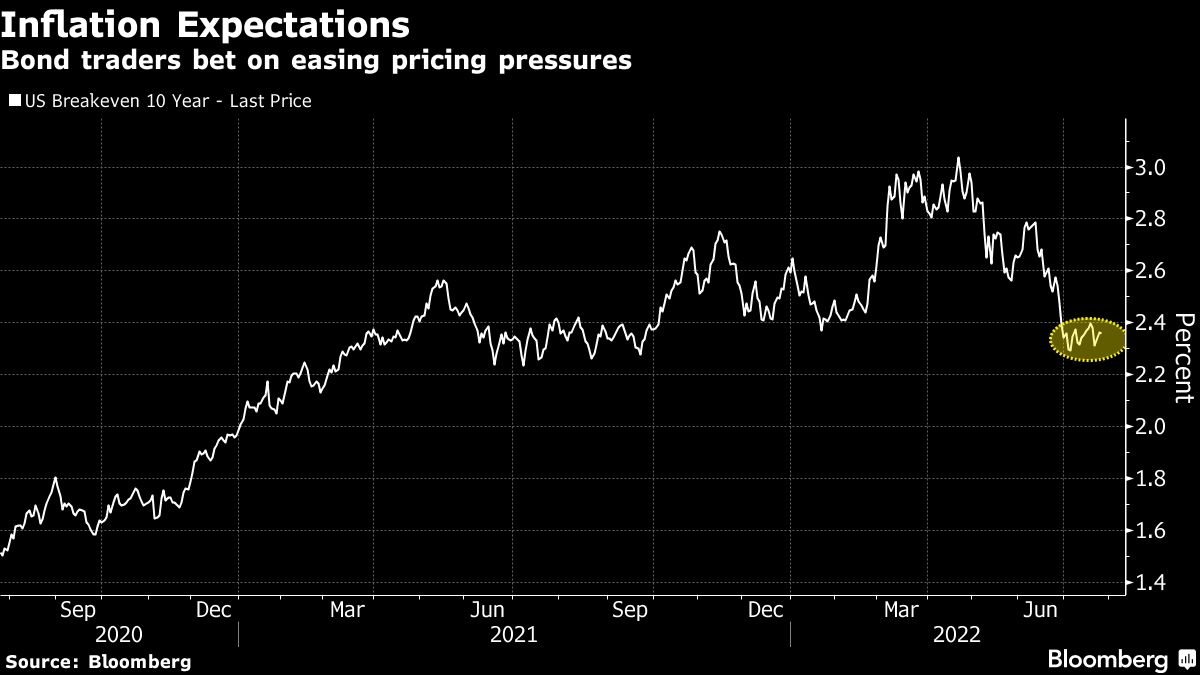Jul 27, 2022
Traders who bet on friendlier Fed are about to see if they're right
, Bloomberg News
Powell likely to be soft about signaling the Fed’s next move: Dennis Lockhart
The biggest stock-bond rally in more than two decades has just raised the ante for investors betting Jerome Powell will send somewhat dovish signals at Wednesday’s high-stakes policy decision.
Since the Federal Reserve last raised interest rates in mid-June, the S&P 500 has advanced 3.5 per cent while the Bloomberg US Treasury Index is up 2.7 per cent. It’s the first time in 22 years that each asset was up at least 2 per cent before a rate increase.
While stock investors have pared some of their sanguine bets in two of the last three sessions, the set-up heightens the drama over this week’s meeting of the Federal Open Market Committee, where policy makers are widely expected to enact a 75-basis-point tightening.
Fixed-income and equity camps are likely expecting that Fed Chair Powell’s hawkish mission will be tempered by signs inflation has peaked as an economic downturn nears -- a wager not without significant risk.
“The market has shifted to bad-news-is-good-news again, the whole idea that central banks will pivot because the data is so bad,” Goldman Sachs Group Inc. strategist Christian Mueller-Glissmann said in an interview on Bloomberg TV. “We’re going back to a template that we know well.”

Synchronized gains are a departure from earlier this year, when widespread declines were the rule amid the Fed’s most aggressive tightening cycle in decades to fight roaring inflation. Several factors have fed the reversal, from thin equity positioning to a flight to the safety of American assets amid chaos in Europe and China.
Yield curves across Treasury bonds have now inverted in a warning signal about a potential recession. But with inflation expectations falling, more investors are looking past dispiriting economic data and instead focusing on the prospect that policy makers would act to avoid the worst outcome.
Equity investors are anticipating an economic slowdown where companies known to post earnings growth regardless will be rewarded -- like Big Tech -- rather than a downturn where no stock will be spared.
Other risky assets have also rebounded in the face of disappointing data from housing to business activity. A Bloomberg index of high-yield bonds has added more than 4 per cent in July, on course for the best month in two years.
Wagering on a friendly Fed is too premature a bet for Ajay Rajadhyaksha, a strategist at Barclays Plc. The way he sees it, policy officials would try to avoid the mistake they made in April. That month, central bankers talked down the size of rate hikes that would be ultimately needed, prompting bond traders to question the Fed’s commitment to its inflation target. Treasury yields spiked, spurring losses across assets. The S&P 500 dropped almost 9 per cent for the worst month since the pandemic crash.
“The Fed has seen what happens when it prematurely declares victory over inflation and is unlikely to repeat that mistake,” said Rajadhyaksha. “Stocks and bonds are both hoping that the Fed will pivot away from its commitment to overtightening. It’s a hope that is likely to be dashed this week.”

Expectations for future pricing pressure have now fallen in the bond market, while consumer expectations of long-term inflation fell to 2.8 per cent in the University of Michigan’s July survey -- near a one-year low.
Traders are betting that this tightening cycle could end earlier than previously anticipated. Treasury futures now embed expectations that interest rates will peak in February. At the start of last month, the top wasn’t expected until July of next year.
A Fed dovish pivot of sorts would open the floodgates for macro traders to go long tech stocks and to short the dollar against the Japanese yen, according to Viraj Patel, a strategist at Vanda Research.
“What appears to be missing is a ‘green light’ that would allow macro investors to go all in on these trades,” Patel said. “One common missing ingredient is a clear dovish Fed pivot –- which could come as early as this week if US policy makers acknowledge the global growth concerns starting to dominate markets.”







